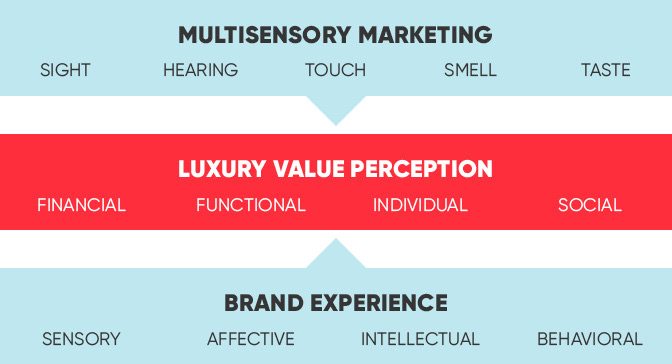Mobile technology has changed the where, how and when of customers’ interactions with brands. The constant contact and oversaturation of marketing assets means that in order to build your brand, you have to create a sense of intimacy with customers by using reach and empathy.
Consumers won’t always remember your brand’s tagline. However, they will remember how you made them feel. Brand experience is the empathetic bridge between brands and consumers that helps your message rise above the rest. This is why the brand experience, or strategically managing consumers’ every interaction with a brand, is essential to the new model of brand building.
Leveraging creative elements can help you achieve this goal by differentiating your brand experience to create a message that stands out.
BRAND IDENTITY: VOICE & TONE
One of the simplest, yet most effective ways that writers help organizations have a distinct brand experience is by developing and using brand voice and tone. Having language and personality that is instantly recognizable is a signal of strong branding, increasing top-of-mind awareness—a critical component of brand experience. Writers are essential to living out a brand’s identity, communicating their values, points of differentiation and offerings.
Are you a high-end company who speaks in an eloquent tone to promote an air of exclusivity? Or are you a millennial-centric company that uses a casual tone to communicate approachability? Brand tone itself should be a differentiator to help customers identify and connect with your values.
Edit strategists help hone in on a brand voice and tone that complements your brand story and experience. Brands like Disney, Taco Bell and Adult Swim, the nighttime programming block on Cartoon Network, are great examples of leveraging tone and personality to create a recognizable voice.
From commercials to in-store signage to e-blasts, every opportunity brands use their brand voice to communicate their desired feeling to consumers— strengthening the level of cohesion and differentiation of their brand experience.
MULTISENSORY EXPERIENCES
Not everything is experienced through words; sometimes you can smell it better than you can read it. Yet, even in these multisensory settings, writers help structure brand narratives to guide the customer through the brand experience. Nevertheless, writers have to be aware of our place in limited-copy settings and collaborate with other creatives to express the brand narrative through different senses to rise above the crowd.
Effective brand experiences evoke all the senses to create a true experience that is psychologically engrained deeper into the consumer’s psyche than stimulating one sense alone. In other words, writers need to know when to stop talking.
Multisensory experiences allow brands to communicate their message through multiple media to create a feeling that consumers will remember and want more of.
To best capitalize on this, you have to understand your target market’s perceptions. Are they driven by cost or more social components? From fresh-cut flowers, food samples, ambient music and mood lighting to designing interactive experiences, customers feel like they’re interpreting the brand for themselves—even though their experience is more calculated than ever. The chart below shows how all these factors translate in the luxury market.

One article, which includes the above chart, states, “Multisensory marketing can be defined as ‘marketing that engages the consumers’ senses and affects their perception, judgment and behavior.’” With this method, you can leverage the potential of multisensory enhancement, i.e., the positive interaction effects among the senses. So communicating an advertising message congruently through multiple senses strengthens consumers’ perception.
AUTHENTICITY
Today’s consumers, particularly millennials, care more than ever about deeper aspects of the brand’s values, like sustainability and social responsibility. So mood lighting and a witty tone of voice are not enough to realize the full potential of brand experiences. The affective, or emotional, portion of brand experience needs authentic feelings to latch onto.
For example, outdoorsy retail co-op REI has a video series where individuals who are making their own paths and living out the REI brand tell their stories of obstacle and triumph. The content is so compelling that the viewer loses sight of the fact that it is in fact branded material. The REI logo is only featured at the beginning and end of their videos. They did more showing than purely telling—this is authenticity at its finest. They leverage their cooperative nature to let their customers have a voice in what is, as owners, their brand story.
Writers can help brands speak to target audiences in authentic voices. Social media platforms such as Snapchat have thrived based on this nuance; within editors’ witty captions, tweets and compelling headlines, followers get to see the “behind-the-scenes” part of a brand’s story.

Particularly on social platforms and video series like REI’s, writers help brands talk to humans like humans and convey your brand’s message in a compelling manner by identifying the desired message and finding the human elements of your brand to illuminate in content.
MATCH THE BRAND EXPERIENCE WITH THE CUSTOMER AND CONTENT EXPERIENCE
If you’re a brand with a fun, quirky personality, your in-store experience would embody these values. You probably have bright colors and signage with models making silly faces. This same personality should extend into all of your marketing assets from store design to email marketing—the language, colors and general content of your messaging should echo whatever the customer experience is. It should have that same quirkiness and same essence, just translated onto a different platform.
If you lose your personality and, for example, your email marketing becomes generic and not compelling, your brand’s emails then get marked as spam. Now, the customer most likely holds your brand in an unfavorable position. Don’t lose the personality of your customer experience in your content experience.
Personalizing content is the icing on the brand experience cake because you get to: 1. Use the personality developed by your editors to serve that individual’s specific wants and needs. 2. Send targeted offers by tracking which specific products the customer is interested in, which are proven to be more successful than generic offerings.
A unique personality through all elements of the customer and content experience separates your message from others.
CONCLUSION
The world’s great thinkers have contemplated the complex notion of experience. Jimi Hendrix famously asked, “Are you experienced?” Aristotle believed that our experiences defined us because what we’ve experienced is the only thing we know for certain. This rule is applicable to the marketing game in that your brand experience is what the customer will know of you and your products.
Experience carries with it a gravity that leaves an impression on our psyches and has the potential to create a loyal following and marketing impression by appealing to more than the consumer’s eyes and ears.
By bringing in strong writers and other creatives, you break through the clutter. You’re creating a message that stands above the rest, and that’s what affects data and analytics in the end when we see customer success.



